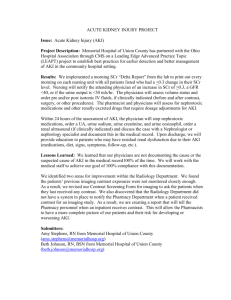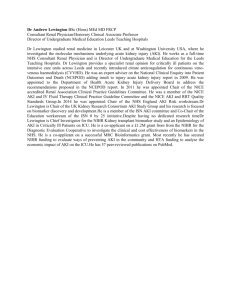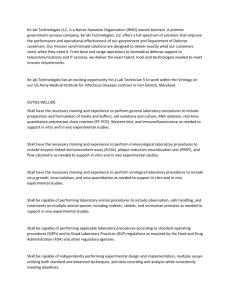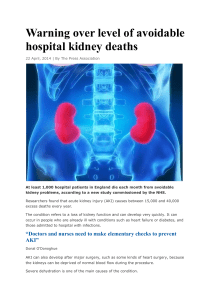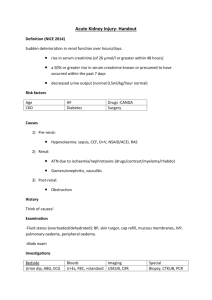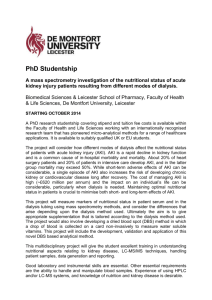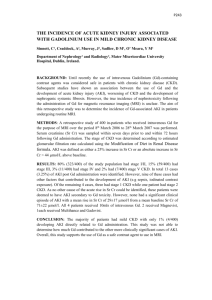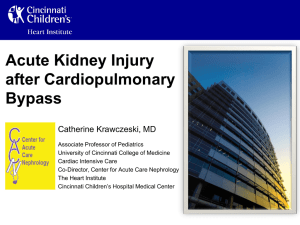Acute Kidney Injury - British Renal Society
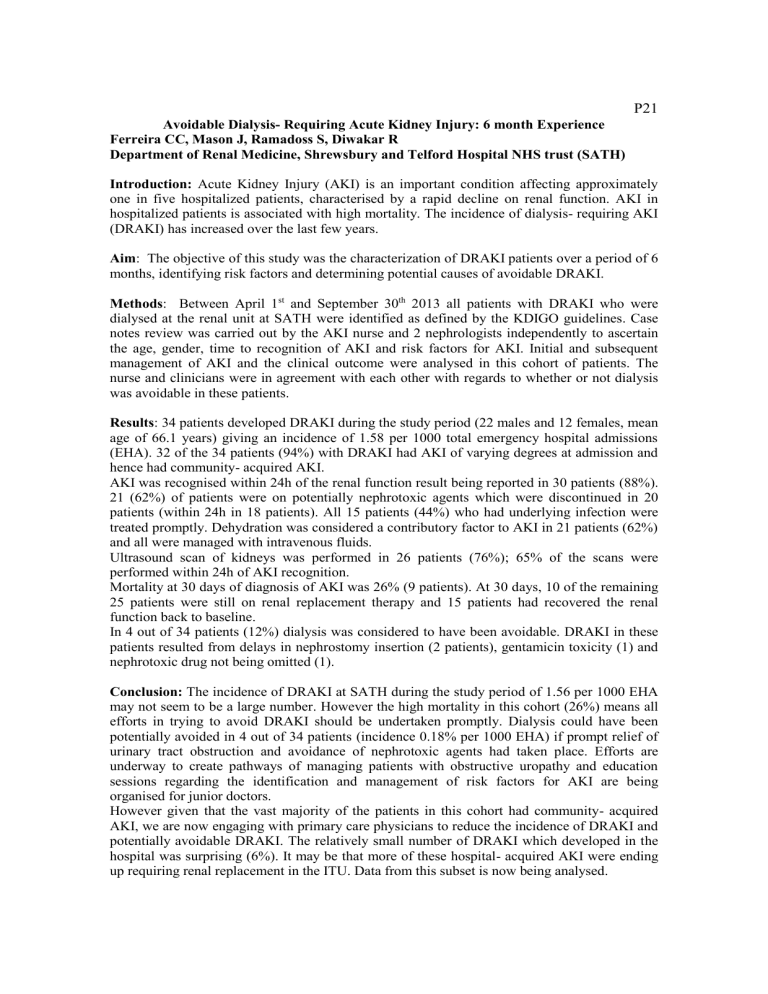
P21
Avoidable Dialysis- Requiring Acute Kidney Injury: 6 month Experience
Ferreira CC, Mason J, Ramadoss S, Diwakar R
Department of Renal Medicine, Shrewsbury and Telford Hospital NHS trust (SATH)
Introduction: Acute Kidney Injury (AKI) is an important condition affecting approximately one in five hospitalized patients, characterised by a rapid decline on renal function. AKI in hospitalized patients is associated with high mortality. The incidence of dialysis- requiring AKI
(DRAKI) has increased over the last few years.
Aim : The objective of this study was the characterization of DRAKI patients over a period of 6 months, identifying risk factors and determining potential causes of avoidable DRAKI.
Methods : Between April 1 st and September 30 th 2013 all patients with DRAKI who were dialysed at the renal unit at SATH were identified as defined by the KDIGO guidelines. Case notes review was carried out by the AKI nurse and 2 nephrologists independently to ascertain the age, gender, time to recognition of AKI and risk factors for AKI. Initial and subsequent management of AKI and the clinical outcome were analysed in this cohort of patients. The nurse and clinicians were in agreement with each other with regards to whether or not dialysis was avoidable in these patients.
Results : 34 patients developed DRAKI during the study period (22 males and 12 females, mean age of 66.1 years) giving an incidence of 1.58 per 1000 total emergency hospital admissions
(EHA). 32 of the 34 patients (94%) with DRAKI had AKI of varying degrees at admission and hence had community- acquired AKI.
AKI was recognised within 24h of the renal function result being reported in 30 patients (88%).
21 (62%) of patients were on potentially nephrotoxic agents which were discontinued in 20 patients (within 24h in 18 patients). All 15 patients (44%) who had underlying infection were treated promptly. Dehydration was considered a contributory factor to AKI in 21 patients (62%) and all were managed with intravenous fluids.
Ultrasound scan of kidneys was performed in 26 patients (76%); 65% of the scans were performed within 24h of AKI recognition.
Mortality at 30 days of diagnosis of AKI was 26% (9 patients). At 30 days, 10 of the remaining
25 patients were still on renal replacement therapy and 15 patients had recovered the renal function back to baseline.
In 4 out of 34 patients (12%) dialysis was considered to have been avoidable. DRAKI in these patients resulted from delays in nephrostomy insertion (2 patients), gentamicin toxicity (1) and nephrotoxic drug not being omitted (1).
Conclusion: The incidence of DRAKI at SATH during the study period of 1.56 per 1000 EHA may not seem to be a large number. However the high mortality in this cohort (26%) means all efforts in trying to avoid DRAKI should be undertaken promptly. Dialysis could have been potentially avoided in 4 out of 34 patients (incidence 0.18% per 1000 EHA) if prompt relief of urinary tract obstruction and avoidance of nephrotoxic agents had taken place. Efforts are underway to create pathways of managing patients with obstructive uropathy and education sessions regarding the identification and management of risk factors for AKI are being organised for junior doctors.
However given that the vast majority of the patients in this cohort had community- acquired
AKI, we are now engaging with primary care physicians to reduce the incidence of DRAKI and potentially avoidable DRAKI. The relatively small number of DRAKI which developed in the hospital was surprising (6%). It may be that more of these hospital- acquired AKI were ending up requiring renal replacement in the ITU. Data from this subset is now being analysed.
